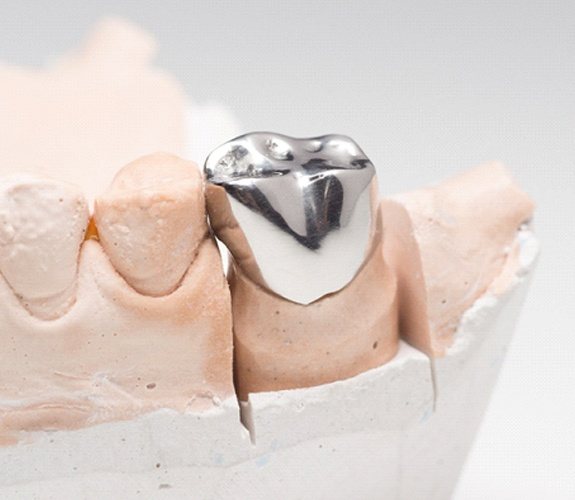
Restorative Dentistry for Kids – Lake Zurich, IL
The Quality Repairs Your Child’s Smile Deserves
There are many steps you can take to protect your child’s smile – bring them to Grand Dental – Lake Zurich for regular checkups, invest in a mouthguard, etc. – but unfortunately, sometimes dental damage simply can’t be avoided. In the event that your little one’s teeth become damaged or decayed, we invite you to call our office immediately; once we’ve evaluated the damage, we can repair it with a well-chosen, fully customized restoration that will keep the teeth safe while the mouth continues to grow.
Why Choose Grand Dental – Lake Zurich for Restorative Dentistry for Kids?
- Personalized Stainless Steel Crowns
- Discreet, Image-Friendly Fillings
- A Kind, Caring Dental Team
Tooth-Colored Fillings

Poor oral hygiene and too much exposure to sugar can leave your child with cavities. When left alone, cavities can cause significant pain and could eventually lead to an infection. In order to fix a cavity, first we need to remove the bacteria causing the problem as well as any decay that has already occurred. Then, since enamel doesn’t heal naturally, a filling can be applied to fix the damage. We prefer fillings made out of composite resin, which can be customized to resemble the natural enamel so that nobody else at school realizes that your child has had their teeth repaired. Such fillings are also better for your child’s long-term oral health because they don’t require us to take out as much enamel from the tooth.
Pulp Therapy

An infected tooth may eventually have to be removed. Not only can this be a stressful, frightening process for your child, but it naturally has quite a dramatic impact on their oral development. Even a baby tooth can cause issues if it’s removed too early, hindering the eventual eruption of the underlying adult tooth. Pulp therapy is often your best option for preventing an eventual tooth extraction. We can open up the child’s tooth and take out the tissue that has become infected. Sometimes the entire pulp is removed in what is known as a pulpectomy. For less severe cases, we can perform a pulpotomy instead, which means we only take the tissue located in the crown and leave the tissue in the root canal.
Dental Crowns

Dental crowns have plenty of uses, from protecting weakened teeth to repairing severe decay or extensive trauma. It’s important for a crown to be placed as soon as possible once your child’s tooth has been damaged; otherwise, they won’t be able bite and chew properly, and they’ll be more susceptible to dental infections. Also, since broken or decayed teeth often cause discomfort and sensitivity, getting a crown could help stop your child’s dental pain.
We typically make pediatric crowns out of stainless steel as per the recommendations of the American Academy of Pediatric Dentistry. This material is very strong and durable, which is especially important when protecting a still-developing grin. And compared to other options, stainless steel crowns are relatively affordable and lead to less tooth sensitivity.